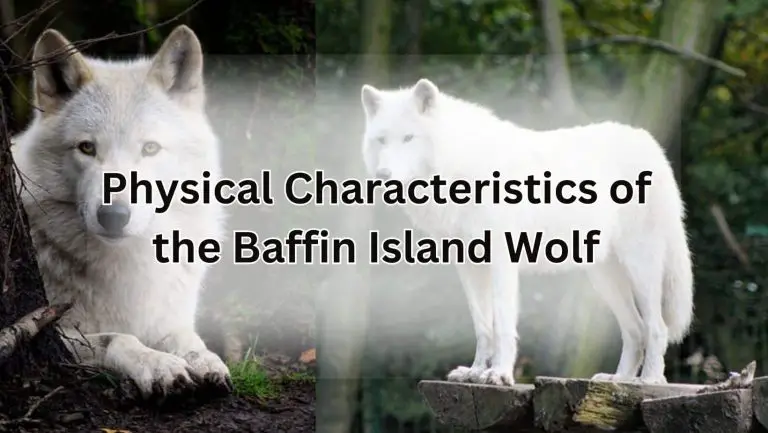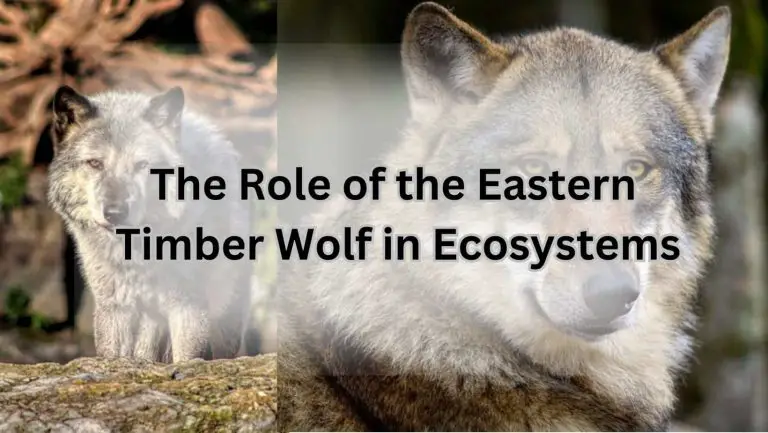Mackenzie River Wolf: Unleashing the Wild Side of Canids

Overview of Mackenzie River Wolf
The Mackenzie River wolf, also known as the Alaskan wolf or Canis lupus occidentalis, is a majestic and fascinating species of wolf that inhabits the northern regions of North America. Let’s dive into the unique characteristics and behaviors of this remarkable creature!
Habitat and Range of Mackenzie River Wolf
The Mackenzie River wolf calls the vast and rugged landscapes of the Arctic and northern timber regions its home. From the icy tundras to the dense forests, these wolves have adapted to thrive in some of the harshest environments on Earth. Their range extends from Alaska to parts of Canada, where they roam freely in search of prey.
Physical Characteristics of Mackenzie River Wolf
One look at the Mackenzie River wolf and you’ll be captivated by its beauty. With a thick fur coat that ranges in color from white to grey to black, these wolves are perfectly suited for the cold climates they inhabit. They are known for their piercing eyes and strong, muscular bodies that allow them to navigate the rugged terrain with ease.
Behavior and Social Structure of Mackenzie River Wolf
These wolves are highly intelligent and social creatures, living in packs that are led by an alpha pair. They communicate through howls and body language, working together to hunt and protect their territory. The Mackenzie River wolf is a skilled predator, preying on a variety of animals such as caribou, moose, and smaller mammals.
As you delve deeper into the world of the Mackenzie River wolf, you’ll discover a species that is not only vital to the ecosystem but also a symbol of strength and resilience in the wild. Stay tuned for more fascinating facts about these incredible creatures!
Diet and Hunting Habits of Mackenzie River Wolf
When it comes to the diet and hunting habits of the magnificent Mackenzie River Wolf, also known as the Alaskan wolf, there are some fascinating facts to uncover. Let’s dive into the world of this majestic predator and explore its unique characteristics.
Prey Selection of Mackenzie River Wolf
The Mackenzie River Wolf is a skilled hunter that preys on a variety of animals, including caribou, moose, musk oxen, and Dall sheep. These wolves have a keen sense of smell and excellent hunting instincts, allowing them to track down their prey with precision. Their diet also includes smaller mammals like rabbits and rodents, making them versatile hunters in their natural habitat.
Hunting Techniques of Mackenzie River Wolf
These wolves are known for their cooperative hunting techniques, often working in packs to take down larger prey. They use strategic tactics such as surrounding their target, chasing it towards other pack members, and taking turns to wear down the prey until they can make the final kill. This teamwork and coordination are essential for the survival of the pack and ensure a successful hunt.
Impact of Diet on Ecosystem
The diet of the Mackenzie River Wolf plays a crucial role in maintaining the balance of the ecosystem. By controlling the population of herbivores like caribou and moose, these wolves help prevent overgrazing and maintain the health of plant species in their habitat. This, in turn, has a ripple effect on other wildlife populations, creating a harmonious ecosystem where each species plays a vital role.
So, the next time you hear the haunting howl of the Mackenzie River Wolf echoing through the wilderness, remember the important role these predators play in the delicate balance of nature. They are not just fierce hunters but essential guardians of the ecosystem they call home.
3. Conservation Status of Mackenzie River Wolf
As a Canid Wild Life Lover with 20 years of experience, I have a soft spot for the majestic Mackenzie River Wolf. Let’s dive into the conservation status of this fascinating creature and explore the efforts being made to protect its population.
3.1 Threats to Mackenzie River Wolf Population
Despite their resilience, Mackenzie River Wolves face numerous threats that put their population at risk. Habitat loss due to human encroachment, hunting, and climate change are some of the primary challenges these wolves have to contend with. Additionally, competition with other predators and diseases further exacerbate the situation for these wolves.
3.2 Conservation Efforts for Mackenzie River Wolf
Conservationists and wildlife organizations are working tirelessly to safeguard the future of the Mackenzie River Wolf. Initiatives such as habitat restoration, captive breeding programs, and monitoring of wolf populations are being implemented to ensure the survival of these magnificent creatures. By raising awareness about the importance of preserving their natural habitat, conservationists are striving to create a safer environment for the Mackenzie River Wolf to thrive.
3.3 Role of Humans in Protecting Mackenzie River Wolf
Humans play a crucial role in protecting the Mackenzie River Wolf. By advocating for sustainable practices, supporting conservation efforts, and respecting the natural habitats of these wolves, individuals can contribute to the preservation of this species. Educating others about the significance of coexisting with wildlife and promoting responsible behavior towards these wolves is essential in ensuring their long-term survival.
Interactions with Other Species
Now, let’s dive into the fascinating world of the Mackenzie River wolf and its interactions with other species in its environment. From its relationship with prey species to its impact on ecosystem dynamics, these wolves play a crucial role in the delicate balance of nature.
Relationship with Prey Species
The Mackenzie River wolf is a skilled hunter, preying on a variety of animals such as caribou, moose, and even smaller mammals like rabbits and rodents. Their predatory instincts are finely tuned, allowing them to maintain a healthy population of prey species while also ensuring their own survival.
Competition with Other Predators
In the wild, competition among predators is fierce, and the Mackenzie River wolf is no exception. They often compete with other predators such as bears and cougars for food and territory. However, their adaptability and cunning nature help them thrive in these challenging conditions.
Impact on Ecosystem Dynamics
As top predators, Mackenzie River wolves play a crucial role in maintaining ecosystem balance. By controlling the population of prey species, they prevent overgrazing and help maintain the health of vegetation in their habitat. This, in turn, has a ripple effect on other species within the ecosystem, creating a harmonious environment for all.
So, the next time you hear the haunting howl of a Mackenzie River wolf echoing through the wilderness, remember that these majestic creatures are not just lone hunters but key players in the intricate web of life in the wild.
Adaptations of Mackenzie River Wolf
Physical Adaptations for Survival
When it comes to surviving in the harsh Arctic environment, the Mackenzie River Wolf is a true champ. With its thick double-layered fur coat, this wolf is ready to face the freezing temperatures of the region. The outer layer of fur helps repel water and snow, while the inner layer provides insulation to keep the wolf warm. Their large paws act as snowshoes, allowing them to navigate through deep snow effortlessly. These physical adaptations make the Mackenzie River Wolf a formidable predator in its habitat.
Behavioral Adaptations for Hunting
The Mackenzie River Wolf is not just a pretty face with a fluffy coat; it’s also a skilled hunter. These wolves are known for their cooperative hunting behavior, working together in packs to take down large prey such as caribou and muskoxen. Their excellent communication skills and strategic planning during hunts make them efficient predators. They also have strong jaws and sharp teeth, perfect for tearing through tough hides and bones.
Seasonal Adaptations for Changing Environments
As the seasons change in the Arctic, so do the habits of the Mackenzie River Wolf. During the long winter months, these wolves rely on their thick fur coats and fat reserves to survive the cold weather. They may also migrate to lower elevations in search of food. In the summer, when food is more abundant, they take advantage of the warmer temperatures to hunt and raise their pups. These seasonal adaptations allow the Mackenzie River Wolf to thrive in a constantly changing environment.
6. Reproduction and Family Life of Mackenzie River Wolf
6.1 Mating Behavior of Mackenzie River Wolf
When it comes to love in the wild, Mackenzie River wolves are no strangers to the dating game. These majestic creatures typically mate for life, forming strong bonds with their partners. During the mating season, which usually occurs in late winter, the wolves engage in elaborate courtship rituals involving howling and scent marking to attract a mate. Once a pair has bonded, they will work together to raise their offspring and ensure the survival of their pack.
6.2 Parental Care and Pack Dynamics
Parenting in the wolf world is a team effort, with both the alpha male and female playing crucial roles in raising their pups. The entire pack pitches in to care for the young, with older siblings often helping to babysit and teach the pups important survival skills. This cooperative approach to parenting helps strengthen the bonds within the pack and ensures the well-being of the entire group.
6.3 Role of Alpha Pair in Pack Structure
In the world of Mackenzie River wolves, the alpha pair reigns supreme. These dominant wolves are the leaders of the pack, making important decisions about hunting, territory, and overall pack dynamics. The alpha male and female are typically the only ones allowed to mate, ensuring that their strong genes are passed down to the next generation. Despite their authoritative roles, the alpha pair also show great care and affection towards their pack members, creating a harmonious and well-organized wolf family.
7. Folklore and Cultural Significance
7.1 Native American Legends about Mackenzie River Wolf
Legend has it that the Mackenzie River Wolf was revered by Native American tribes as a powerful and wise spirit animal. According to folklore, the wolf symbolized loyalty, strength, and guidance. Many tribes believed that the howling of the Mackenzie River Wolf was a message from the spirit world, warning of danger or signaling good fortune.
7.2 Symbolism of Mackenzie River Wolf in Different Cultures
In various cultures, the Mackenzie River Wolf is seen as a symbol of intelligence, instinct, and freedom. In Native American folklore, the wolf is often portrayed as a teacher and protector, guiding individuals through life’s challenges. In other cultures, the wolf represents family, unity, and the importance of community.
7.3 Conservation of Mackenzie River Wolf in Folklore
Throughout history, the Mackenzie River Wolf has been a symbol of conservation and respect for nature. Many tribes believed that harming a wolf would bring bad luck and disrupt the balance of the natural world. Stories were passed down through generations, teaching the importance of coexisting with wildlife and preserving the delicate ecosystem.
Research and Studies on Mackenzie River Wolf
Scientific Discoveries about Mackenzie River Wolf
Have you ever wondered what makes the Mackenzie River Wolf so unique? Well, scientists have been hard at work uncovering fascinating facts about this majestic creature. From its impressive size to its remarkable hunting techniques, there is so much to learn about the Alaskan wolf.
Tracking and Monitoring Mackenzie River Wolf Populations
Tracking the movements of the Mackenzie River Wolf population is no easy task, but researchers have found innovative ways to keep tabs on these elusive creatures. Using advanced technology and good old-fashioned fieldwork, experts are able to gather valuable data on the behavior and habits of these northern timber wolves.
Future Research Directions for Mackenzie River Wolf
As we look to the future, there are exciting research opportunities on the horizon for the Mackenzie River Wolf. Scientists are eager to delve deeper into topics such as the wolf’s interactions with other species, its role in the ecosystem, and potential conservation efforts to protect this iconic Canadian wolf.
9. Human-Wolf Conflicts
9.1 Livestock Predation by Mackenzie River Wolf
When it comes to the Mackenzie River wolf, one cannot ignore the issue of livestock predation. These cunning creatures have been known to target domestic animals such as sheep, goats, and even the occasional chicken. Farmers in the region have had their fair share of sleepless nights trying to protect their livestock from these opportunistic predators.
9.2 Mitigation Strategies for Human-Wolf Conflicts
Despite the challenges posed by the Mackenzie River wolf, there are various strategies in place to mitigate conflicts between humans and these majestic creatures. From the use of non-lethal deterrents such as flashing lights and loud noises to the implementation of predator-proof enclosures, efforts are being made to find peaceful solutions to coexist with these wolves.
9.3 Coexistence Initiatives between Humans and Mackenzie River Wolf
In recent years, there has been a growing awareness of the importance of coexistence between humans and the Mackenzie River wolf. Conservation organizations and local communities have come together to implement coexistence initiatives that aim to protect both the livelihoods of humans and the natural habitat of these wolves. Through education, outreach programs, and the promotion of sustainable practices, a harmonious relationship is being fostered between these two species.
Myths and Misconceptions about Mackenzie River Wolf
Misunderstandings about Mackenzie River Wolf Behavior
Let’s debunk the myth that Mackenzie River Wolves are aggressive towards humans. Contrary to popular belief, these majestic creatures tend to avoid human interaction and are more interested in hunting for their next meal than causing trouble for us bipeds.
Stereotypes Associated with Mackenzie River Wolf
It’s time to set the record straight on the stereotype that Mackenzie River Wolves are ruthless killers. In reality, these wolves play a vital role in maintaining the delicate balance of their ecosystem and are not the bloodthirsty monsters they are often portrayed to be.
Debunking Common Myths about Mackenzie River Wolf
One prevalent misconception is that Mackenzie River Wolves are solitary creatures. In fact, these wolves often live and hunt in packs, working together to take down larger prey and protect their territory.
Another myth worth dispelling is the idea that Mackenzie River Wolves are a threat to livestock. While they may occasionally target domestic animals for food, these incidents are rare, and wolves primarily rely on wild game for sustenance.
Lastly, let’s address the misconception that Mackenzie River Wolves are a danger to the environment. On the contrary, these wolves play a crucial role in maintaining the health of their ecosystem by controlling prey populations and preventing overgrazing.






